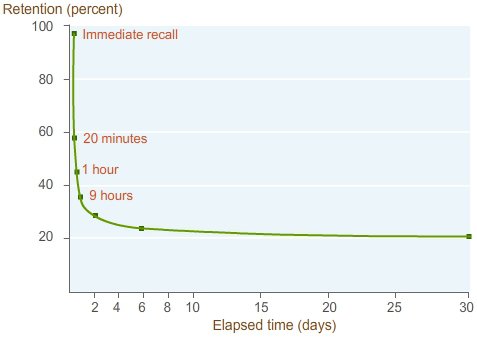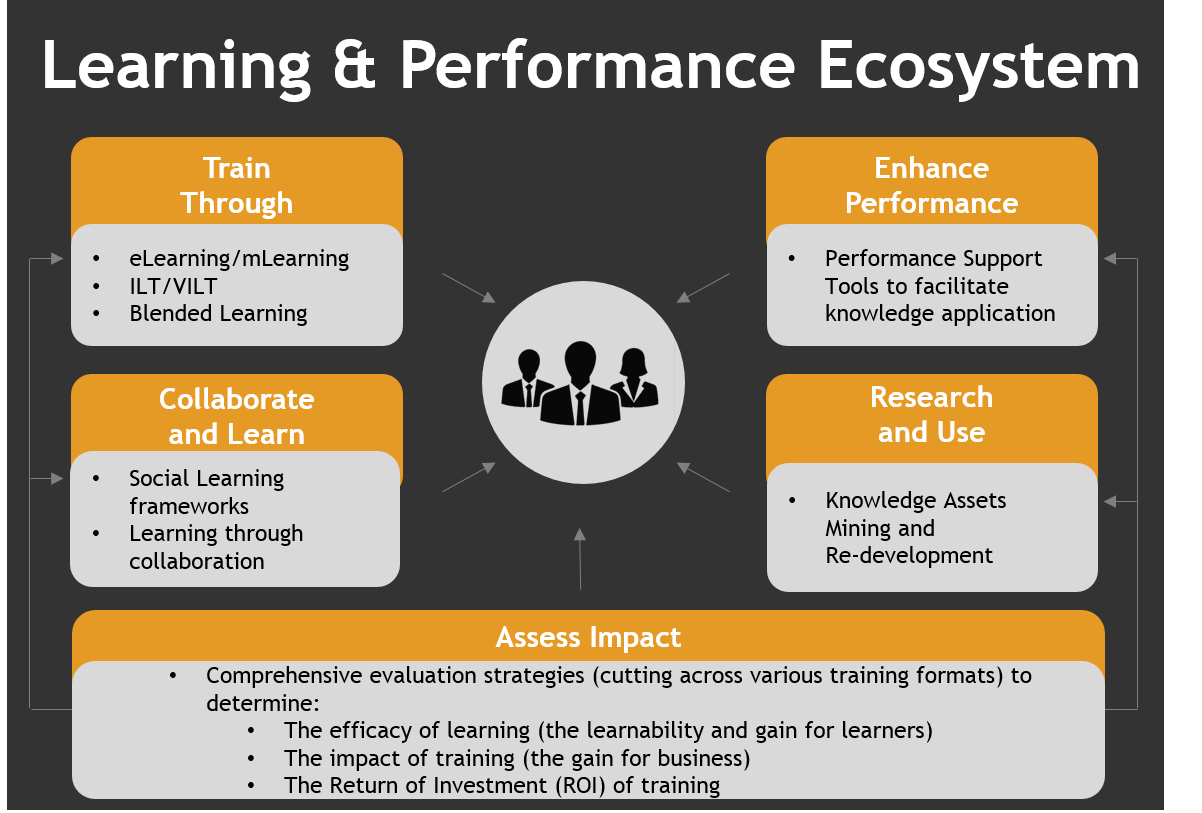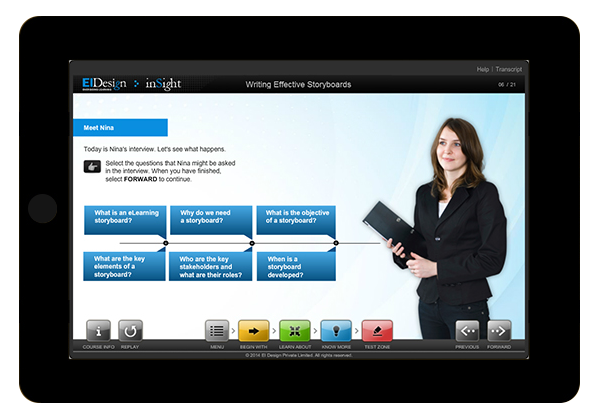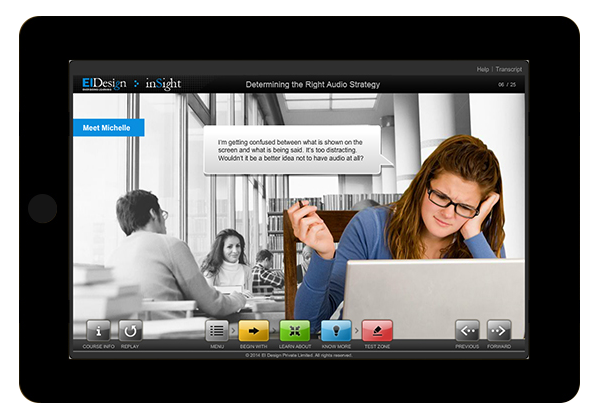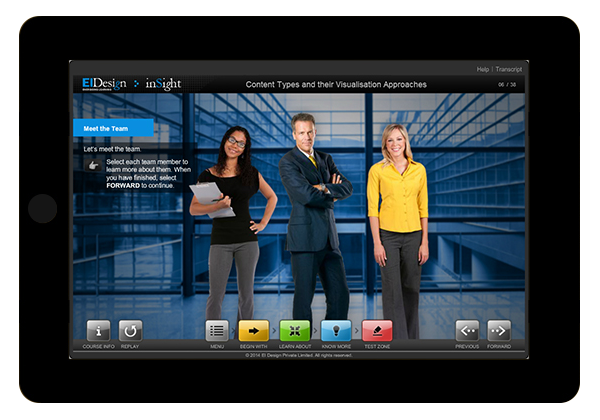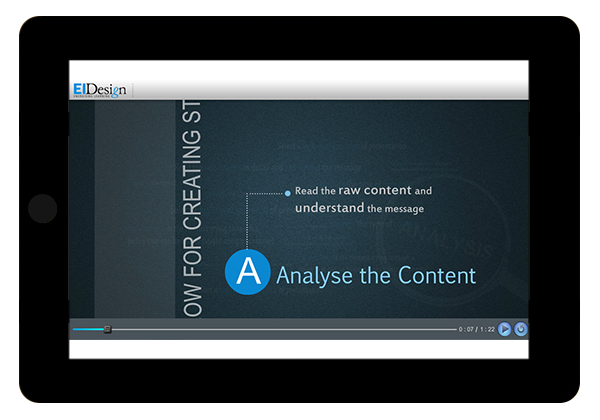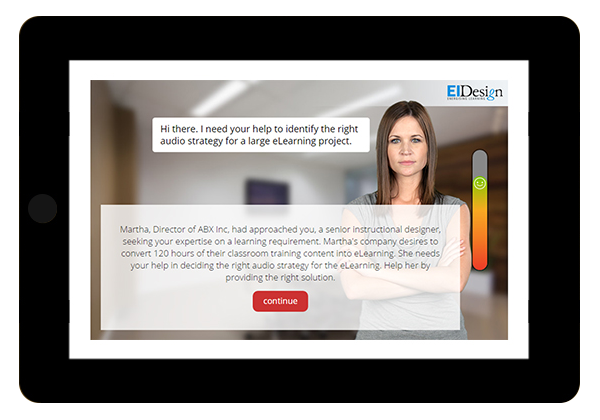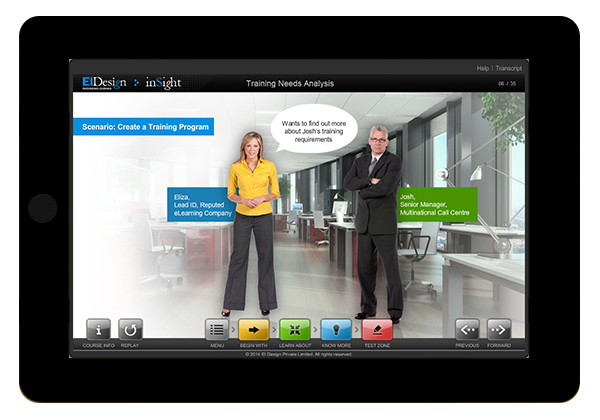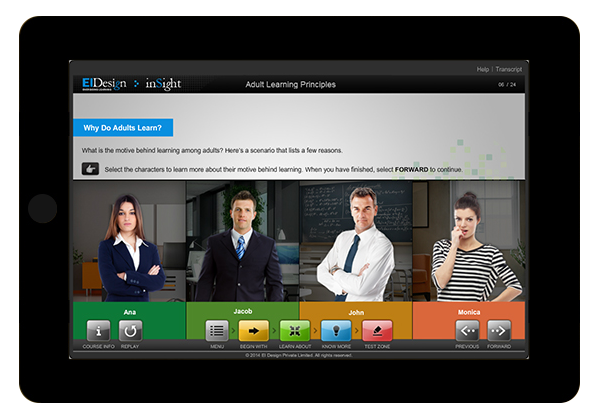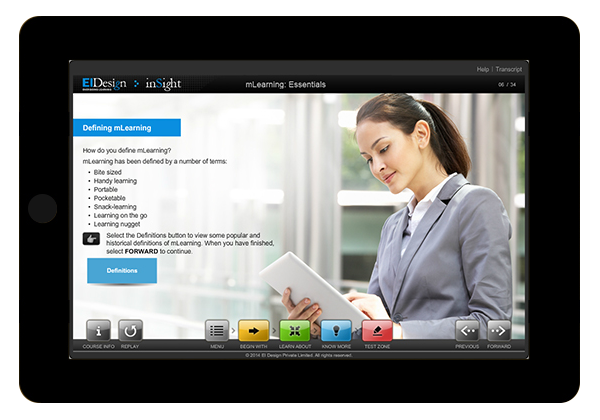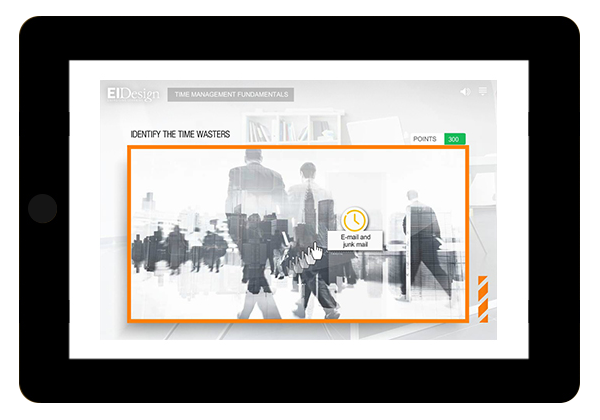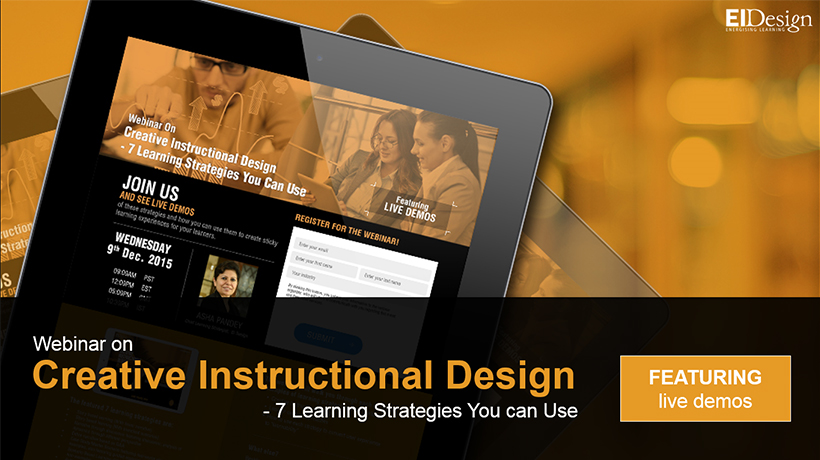
In September 2015, I had released an eBook on Creative Instructional Design Featuring 7 Learning Strategies You Can Use. The eBook has been designed as a job-aid to Instructional Designers and helps them bridge the gap between theory and application. All the learning strategies shown here can be easily applied on their projects. The 7 strategies featured here are from our online suite of 15 courses for Instructional Designers.
9 Examples Of Creative Instructional Design Learning Strategies You Can Use: Plus A Free Gift For Instructional Designers!
On December 9, 2015, I conducted a webinar Creative Instructional Design – 7 Learning Strategies You Can Use -Featuring Live Demos to showcase these strategies. We added two significant strategies to the initial list featured in the eBook, namely:
-
- Performance Support Tools to complement the primary learning.
- Micro learning.
As a special offer, we are offering free access to our online suite of 15 courses for Instructional Designers for 30 days. We encourage Instructional Designers and Learning and Development professionals to see these strategies in action, use them, and enrich their own learning strategies.
Highlights of the Creative Instructional Design Webinar:
-
- We began the session by addressing 5 questions that set the context for how one can leverage on Creative Instructional Design-based learning strategies to engage the learners better.
-
- Looking at the “forgetting curve”, which is an inherent challenge, we looked at the possibilities of “how to make the learning stick”.
-
- We also looked at creating “learning as a continuum” rather than just discrete formal training sessions that happen for finite days in a year.
-
- We showcased how using a bigger picture of a “Learning and Performance Ecosystem” can create a better and collaborative learning environment.
-
- We looked at how using Performance Support Tools can push knowledge acquisition to knowledge application.
-
- We had three polling questions to engage the participants and also provide context to three important aspects, namely:
-
- Power of creative Instructional Design vs Instructional Design.
-
- Usage of Performance Support Tools to push learners to apply the learning on the job.
- Why micro learning is here to stay.
-
- Power of creative Instructional Design vs Instructional Design.
-
- The second part of the webinar focused on live examples of Creative Instructional Design Learning Strategies for primary training (formal, online learning) and Performance Support Tools.
- We additionally looked at how the micro learning-based approach will be a key factor in designing online courses. We wrapped up the session with an example of a micro learning course featuring a gamified activity.
To use these strategies in your organization, you can:
-
- See the link.
- Write to us for a free access to our Instructional Design Suite of 15 courses where these strategies have been used.
Details Of The Creative Instructional Design Webinar – Part 1
We discussed the following 5 questions related to how to create a better learning experience using Creative Instructional Design strategies.
Q1 Did you know the exponential nature of forgetting?
As you see from this diagram featuring the “Forgetting Curve”, we forget 80% of what we learned in 30 days!
Q2 How can you improve the stickiness of learning?
The start point is to re-align your learning strategy to create the required “Chain of Impact”. This will offset the forgetting curve and create a value chain for retention and application of learning.
Q3 What is a “Chain of Impact”?
The Chain of Impact can be defined as measures that lead training to eventual positive ROI:
Training > Learning > Knowledge application > Business gain > ROI
Q4 How can you create your own “Chain of Impact”?
To create the “Chain of Impact,” you need to:
-
- Adopt ways to ensure the learning sticks (sticky learning is the learning that lasts over time).
- Supplement or complement formal training with Performance Support Tools (enabling learners to apply the learning on the job).
Q5 How can you integrate various elements (formal and informal learning) into an organization’s overall learning strategy?
One of the approaches is to work with a bigger picture (use the Learning and Performance Ecosystem-based approach as shown here) and change the discrete training into “learning as a continuum”. Create learning paths for the learners and bring in a mix of measures for knowledge acquisition as well as knowledge application.
Details of the Creative Instructional Design Webinar – Part 2
We shared a few examples to showcase how Creative Instructional Design helps create sticky learning. Each example that we shared illustrated:
-
- How the Creative Instructional Design strategy offset the challenges and met the required mandate.
- How one can use each strategy to convert user experience to “learnability”.
To get further insight on the examples, write to us for a free access to our Instructional Design Suite of 15 courses where these strategies have been used.
Example 1: Story-based learning (linear narrative).
Example 2: Story-based learning (with branching scenarios).
Example 3: Story-based learning (with scenarios).
Example 4: Performance Support Tools (to complement and supplement primarily eLearning courses but focused on knowledge application at work).
Example 5: Performance Support Tools (to complement and supplement primarily eLearning courses but focused on knowledge application at work).
Example 6: Scenario-based learning.
Example 7: Scenario-based learning.
Example 8: Guided exploration (featuring the Q&A approach).
Example 9: Micro learning (with a gamified activity).
I hope these details would be useful in enriching your own learning strategies. Do contact us for free access to our online suite of 15 courses for Instructional Designers for 30 days.
